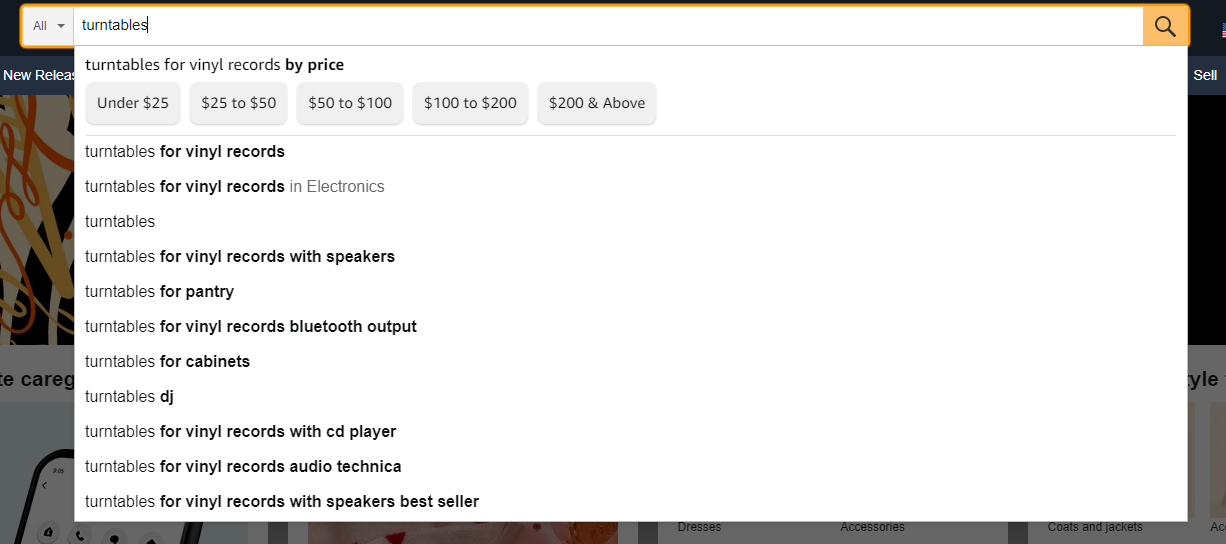
In digital marketing, we talk a lot about what you need to do for your website and how to make it SEO-friendly for users and search bots.
But how much do you know about Amazon SEO?
If you’re an ecommerce business and you’re not on Amazon in 2022, you may not be hitting your sales potential.
Amazon’s a powerhouse, a workhorse, an old reliable when it comes to e-commerce, as most people should be aware of by now.
Everyone wants to get their products on Amazon because that’s where their audiences shop.
And those audiences shop the platform quite a bit.
Amazon generates about $4,722 every second, or about $17 million an hour. The sales giant closed out last year with $469.8 billion in net sales, up 22% over 2020.
That’s why sellers want a piece of the action, and why it can be so difficult to rank your products on Amazon’s results pages.
As with your website, though, you can practice Amazon SEO to give your products a boost.
It’s all about understanding the algorithm, what shoppers are searching for to find what they need, and how you can outperform your competitors.
Here’s a comprehensive guide to Amazon SEO for sellers.
How Amazon’s A9 Algorithm Works
Before we can talk about Amazon SEO and how you can optimize your product listings, it will help to understand how Amazon’s A9 search algorithm works.
It’s similar but not identical to Google’s.
One main difference?
Amazon queries are only commercial, rather than navigational or informational as with Google.
Think about it simply.
You make a search. A9 knows you want to buy whatever you searched.
It matches the query to a group of relevant products, and you are shown those products on a series of pages.
How does Amazon even select those particular products, though?
Again, think about it like Google’s algorithms, but exclusively for ecommerce.
The factors Amazon considers for rankings include:
- Positive customer reviews (better products will sell more and make more money for Amazon).
- Historical sales.
- Relevant keywords included in the product listing.
- The right prices (not too high, not too low, based on the competition).
It’s important to note here that while the algorithm is always looking for relevance based on a query, historical data matters a lot, too, as pointed out in the above list.
The results that have pleased customers in the past are likely to please customers in the future.
New sellers on Amazon are therefore faced with a dilemma: if Amazon prioritizes products with strong sales, but you haven’t made any sales yet or generated any historical data for A9, how can you ever hope to climb Amazon’s rankings?
The answer lies in performing Amazon SEO, starting with the keyword research that can get you found by the shoppers who matter to you.
Performing Amazon Keyword Research
Just like with Google, an Amazon SEO strategy must be built on keyword research.
Without the right keywords in your rankings, your products will seem irrelevant and won’t show up for users.
I’ll talk about how and where to optimize your listings for keywords in a minute. First, we need to know where to find keywords and how to perform keyword research.
One great way of performing keyword research that every Amazon seller should know about is using the Amazon search box.
It will autocomplete your queries as you type them, essentially doing the keyword research for you.
Take the example from the screenshot below.
Say you’re an online music store and want to start getting my turntables listed on Amazon.
Let me see what people are already searching for to get an idea of how to optimize your listings.
Obviously, [vinyl record turntable] is going to be a strong seed term with plenty of competition.
That isn’t the only search you should do, in this case.
You need to keep searching for all the variations of turntables that you can think of and see what comes up.
Take this next example:
 Screenshot from Amazon, February 2022
Screenshot from Amazon, February 2022This search gives some more ideas because the predictions get more specific.
[Turntables for vinyl records], [turntables for vinyl records with speakers], and [turntables for vinyl records with cd player] are all specific queries.
Those are for the people who are further along in their buying journeys.
They know what they want. They just want to see the options.
Search for all the variations you can think of in the search box to get a decent list of keywords for which you could conceivably rank.
What are some other ways of doing Amazon keyword research?
Basically, all the other ways you know about for doing keyword research for Google.
Use free tools such as Keyword Planner or paid tools such as Semrush or Ahrefs to see the search volumes and difficulty ratings of these keywords.
You can also look at your Google Search Console data if you sell the same products on a website to see how people are finding you on Google.
All of these methods together should present you with a decent collection of relevant keywords that you can use to optimize your product listings.
Amazon Listing Optimization
Once you have your list of keywords, it’s time to use them to optimize your product listings.
If you’re already familiar with writing optimized product descriptions and other content for Google rankings, you’re in luck.
Doing it for Amazon works basically the same way.
You should start with your product titles.
Amazon requires that titles do not exceed 200 characters and that they include words that describe the product accurately.
This is also a chance for sellers to incorporate relevant keywords, but please don’t stuff.
Don’t stuff keywords in the rest of your product description, either.
You should use keywords in your prose, your bullet points, and your tech details where applicable. But use them appropriately.
The key is employing the most relevant keywords that also give you the best chances of driving traffic to your products.
Long-tail keywords are okay, too, since not everyone can rank on those perfect seed terms.
Don’t forget you can add keywords to your product pages’ back end, too!
They can help your visibility on Amazon even though customers can’t see them.
Finally, when you write your product descriptions, don’t be afraid to go long.
Be detailed. Tell a story.
It’s content, and it can help your products rank better.
Amazon Product Images
In any post about Amazon SEO, we have to talk about product images.
Whether you’re doing ecommerce on your own website or through Amazon, the right images can just about make or break you.
People are there to buy a product, and your written description goes only so far.
You can describe a vinyl record turntable all you want.
You can talk about its colors, its look, and its features.
But none of that matters if no one can see the thing!
This is why product images matter so much, and not just any images, but high-resolution images (more than 1,000 pixels one way), preferably ones taken professionally.
Remember, Amazon lets customers zoom in pretty closely on product images these days, so quality really matters here.
It’s worth it to note that Amazon doesn’t necessarily rank you higher based on your image quality.
You can and should add SEO-optimized alt text to your images so Google can deliver them in image search results, but the play here is really adding images that show your product from all angles.
Let your images show all the details because images can be just as strong in making a sale as product descriptions.
The other angle you should take for your Amazon product images is what are called lifestyle images, or images that show people using the products in the intended ways.
Why does that matter?
Anything that gets the customer to visualize using your products in their home is a plus.
They can see the item’s size in relation to real-life objects and get a sense of how it would be to use the item.
Zoomable product images alongside lifestyle images are vital to your success on Amazon.
Reviews & Ratings
I mentioned above that product reviews and ratings have a lot to do with where your products fall in Amazon’s search results.
This makes complete sense from a user-experience perspective.
Just like Google, Amazon’s main goal is to present users with positive, useful experiences.
This is why Amazon reviews and star ratings become vital for strong product rankings.
Think about it logically: will Amazon want to show you a bunch of one-star products on the first results page for a query?
No, that won’t help anyone.
Amazon wants customers to buy things, so it’s going to show products that many people have bought and liked.
What matters here are the stars and the number of reviews your products have.
Which product would you trust more: one with 17 reviews or one with 4,567 reviews?
Which set of reviews will give you a clearer picture of what you can expect?
So, if product reviews influence Amazon rankings, how do you get reviews? Amazon facilitates this for you with its Request a Review feature.
It’s always a good idea to reach out to customers after a purchase to see if they’d like to write a review.
The thing is, good products will tend to bring about reviews anyway.
When you’ve made people happy, they will want to share their satisfaction with others.
Negative reviews can always occur, but the trick is to respond swiftly to see what you can do to make the customer’s experience better from this point.
Measuring Product Performance Through Analytics
The final part of doing comprehensive Amazon SEO involves measuring your products’ performance through analytics.
Again, if you optimize a website for Google rankings, then you know the value in analytics.
When it comes to Amazon, you’ll want to track your SEO so you can continue your strategy for product optimization.
Now, if you’re a brand owner, you have access to Amazon’s Brand Analytics.
For all other sellers, though, you have to get into third-party apps that track components such as keywords and product performance.
Most of these tools are all-in-one solutions, meaning you can perform keyword research, get help optimizing your listings, track your products and inventory, look at your finances, get competitor information, and track your Amazon SEO and paid media in general.
If you’re serious about making a living as a seller on Amazon, it will be worth the investment to get into one of these software tools. You just can’t afford to go in blind and risk not making an impact among everyone else vying for a spot on page one.
Which tools are the best?
There are several Amazon analytics tools that consistently rank highly among reviewers.
Some of those are Helium 10, Sellics, and DataHawk.
Many of these companies offer either free trials or live demos so you can decide which tool is right for you.
A Strong Amazon SEO Strategy Starts Right Now
Sellers on Amazon have a lot of work cut out for them when they want to make it on the platform.
If you’re already familiar with optimizing content for Google, then you’re part of the way there already.
As long as you know that Amazon rewards sellers who stand out with amazing products that dazzle customers, you know what direction you need to go.
These Amazon SEO tips will get you the rest of the way.
More resources:
Featured Image: MooseDesign/Shutterstock







